I finally got around to watching Otto Preminger’s Saint Joan — which has at last been made available on DVD by The Warner Archive. It’s not a great film but Jean Seberg’s performance in it is stunning, pitch-perfect — she never makes a wrong move.
This was shocking to me, because the performance was universally reviled when the film came out — the reviews she got for it, along with the reviews she got for her second film, Bonjour Tristesse, all but ended Seberg’s Hollywood career.
What on earth were the critics thinking — what were they seeing?
Seberg was 19 when she made the film. Her only previous acting experience had been a season of summer stock. Preminger made a big to-do over his search for a Joan, and over the fact that Seberg had been plucked from obscurity for the plum role. I guess this was a set-up too tempting to overlook — how delicious to report that the little nobody had fallen on her face.
In truth her emotional commitment to the role and her riveting cinematic presence added up to a triumph. She blows all the veteran actors she was surrounded with off the screen.
Many of them were trained British stage actors, and the American star Richard Widmark gives a highly theatrical (though amusing) performance as the dithering Dauphin. But it’s all pasteboard stuff compared to Seberg’s natural charisma in front of a camera.
Critics love to devalue this sort of acting, even though it requires a special sort of intuitive genius. John Wayne had it, as did Marilyn Monroe, but that never got them very far with the critics of their own time.
It’s infuriating, especially when you see how a Wayne performance or a Monroe performance holds up over time, still seems fresh and new, while the performances of the prestige stage-oriented actors feel increasingly dated.
Once you’ve seen Olivier’s Hamlet, you’ve seen Olivier’s Hamlet. You can watch the performance over and over again and relish the craft of it each time but you will never find anything new in it. By contrast, however many times you watch John Wayne’s performance in The Searchers, or Marilyn Monroe’s performance in Bus Stop, they feel as though they’re being created from scratch, coming into being for the first time in front of your eyes. Because they were created primarily out of intuition and instinct, rather than craft, they are, like all really great art, permanently surprising.
Maybe Preminger was wrong to try and mix the styles of the acting in Saint Joan — that’s one of the reasons the film feels disjointed — but he couldn’t have been more right about Seberg. She was the real thing.
Shaw’s play, from which the film was adapted, is as stylized as most of the acting, very self-consciously literary, but intelligent and witty, too. It abounds in twisting ironies and is invested with sympathy for all its characters. It’s very entertaining stuff. But Seberg takes it somewhere beyond its ambitions. Her Joan can be ironic and clear-eyed, too, in the Shavian way, but you never lose sight of her unwavering faith in herself, in France and in her guiding saints. It’s a portrayal of conviction that can make you cry.
Preminger was a great filmmaker — even his failures have brilliant and startling elements that make the films worth studying closely. He never brought to the screen anything more brilliant and startling than Seberg’s performance in Saint Joan.
You can click on most of the images above to enlarge them.

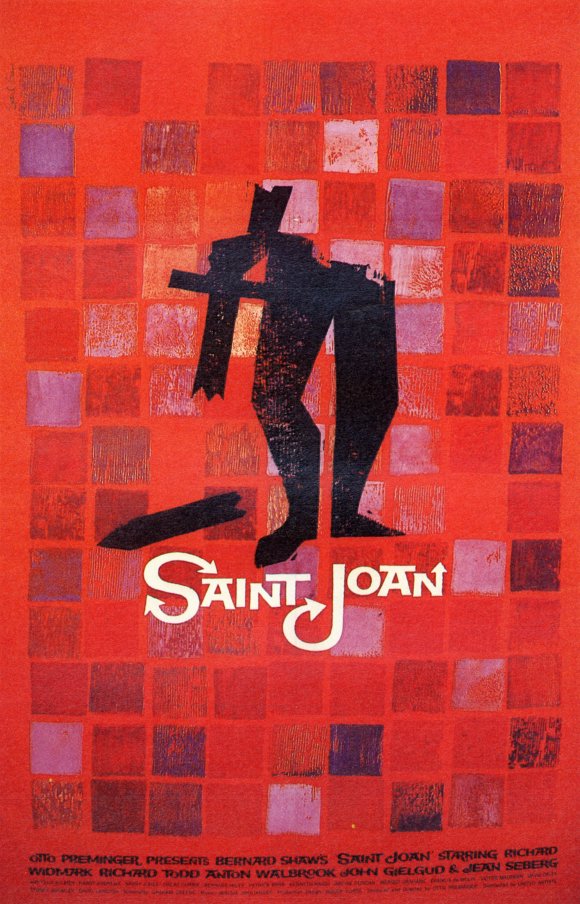
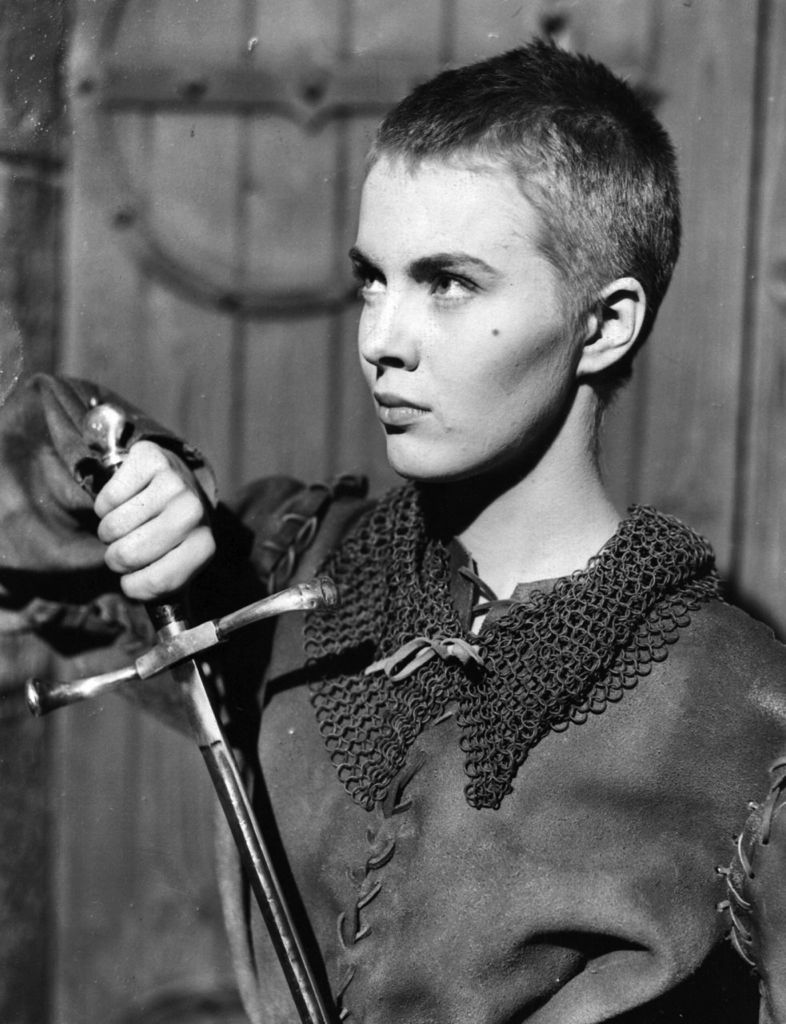
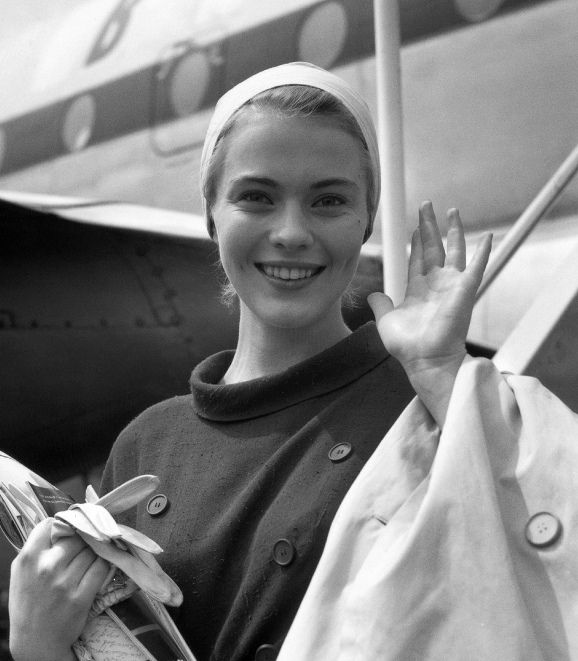
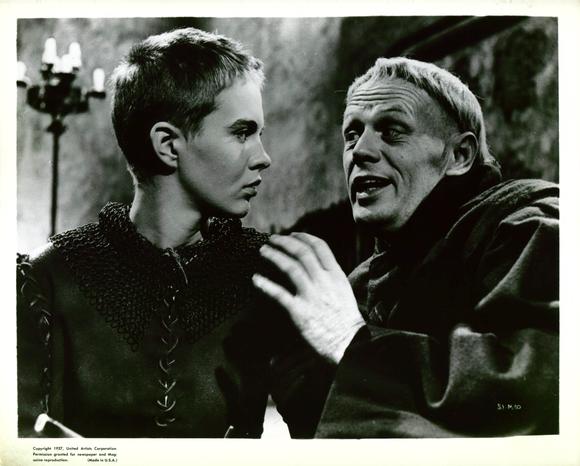
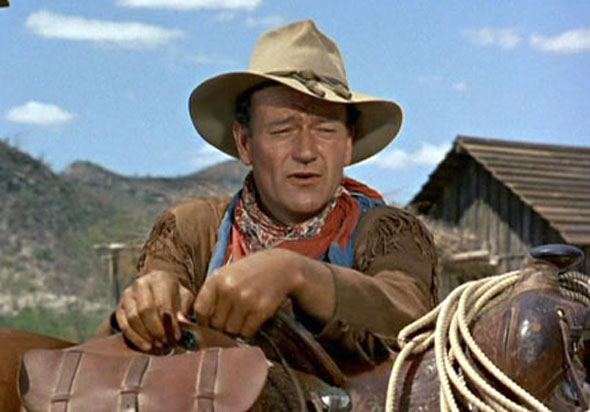
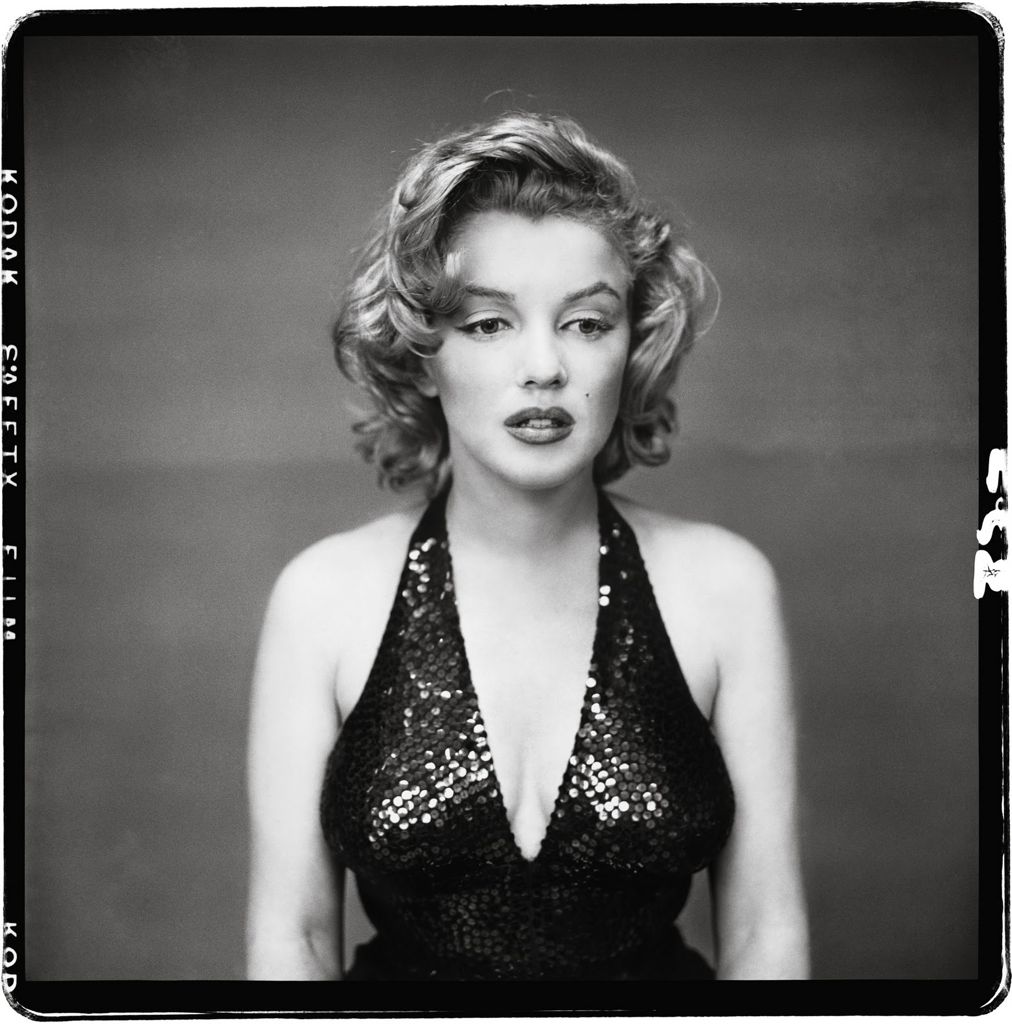
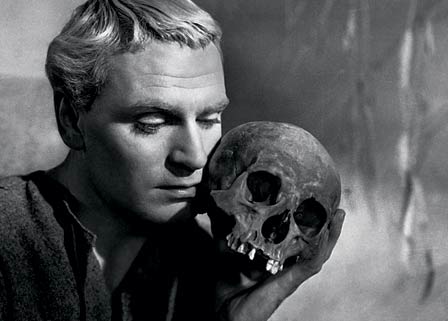
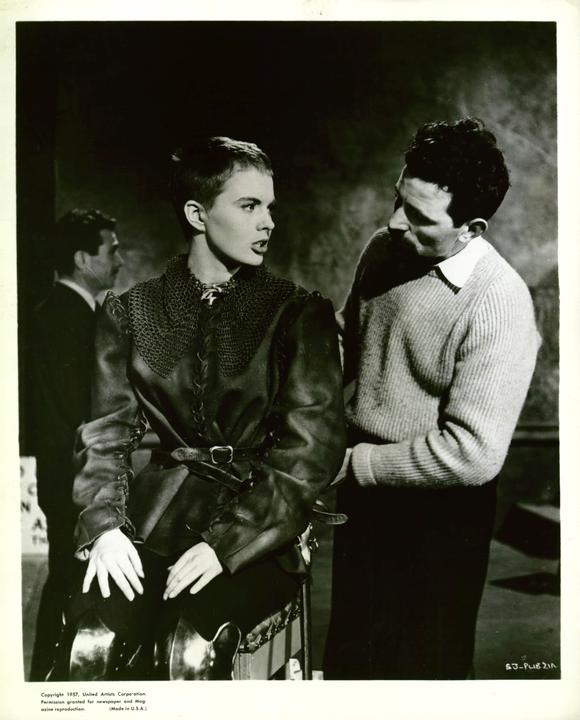
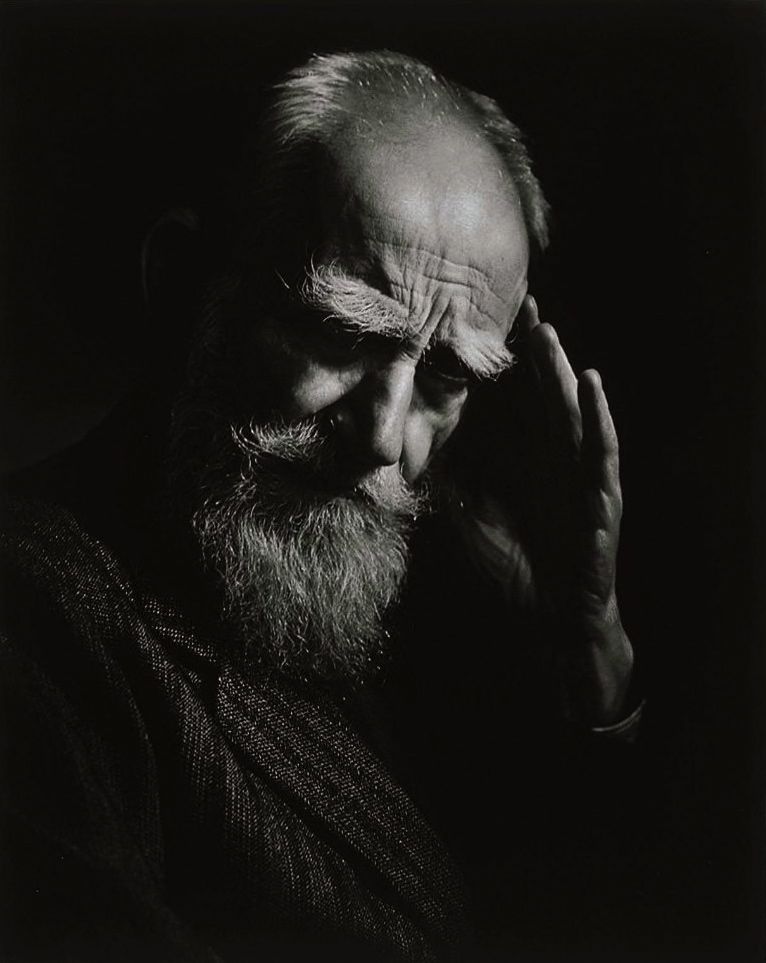
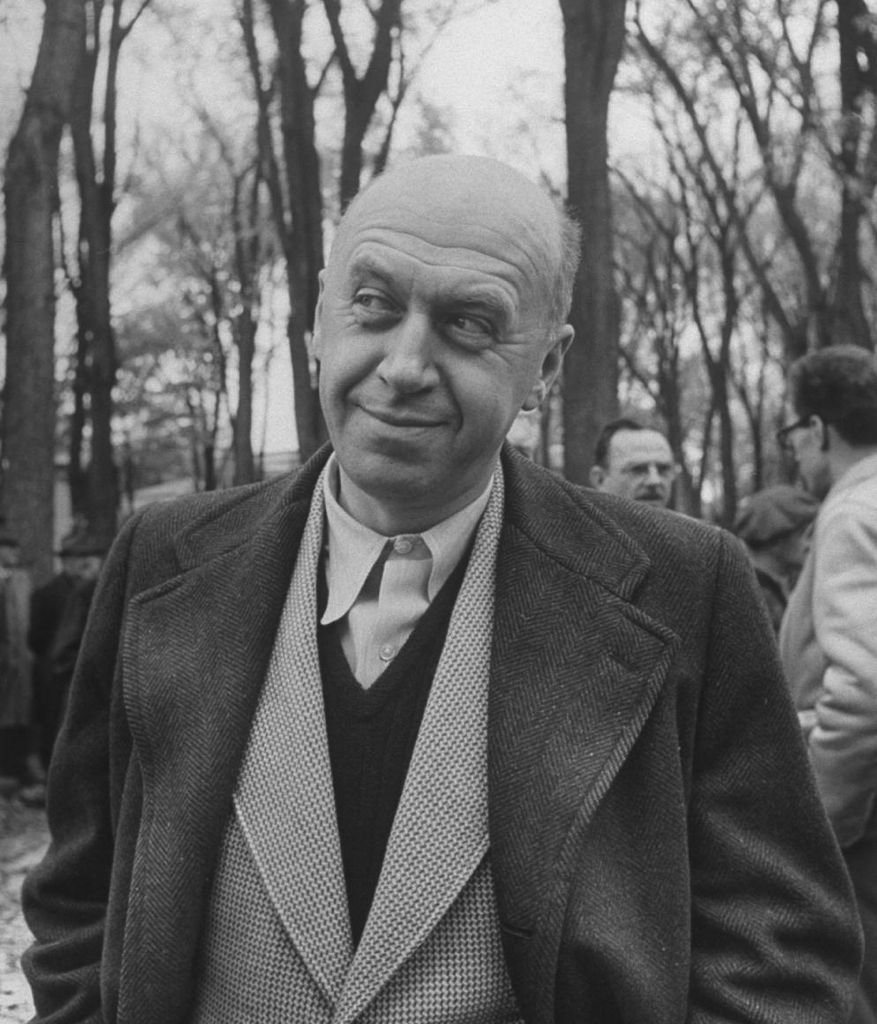
Hi Lloyd
Great artist, Seberg. His best performance for me was Lilith, R. Rossen, but usually always is right on the screen. She was one of the muses on the Nouvelle Vague… easy to understand.
Roy
The New Wave critics and and directors were just about the only ones who understood how good she was.
I always thought Olivier’s “Hamlet” was over-directed.
Didn’t you?
Plus, on another note, Lloydville, I think Shaw wrote that ‘Saint Joan’ was the first Protestant martyr. Always liked that from him.
Seberg was Wonderful, as you point out with such love!
She is very Protestant in the film. Curiously, Grahame Greene, who did the film adaptation and was a Catholic, was criticized for minimizing Shaw’s portrayal of the church’s role in her murder.
ABSOLUTELY right! This movie has always been a “guilty pleasure” of mine. Yes, it IS from two different planets at once (the self-consciously “theatrical” and the nakedly filmic) but for me that’s part of its charm. For example, Gielgud’s Warwick is the perfect Shavian ironist, each syllable of his lines delivered impeccably. But all his well-crafted supercilliousness falls apart when faced with Seberg’s emotional honesty. I suspect Shaw himself would have loved that result.
Shaw would have been furious with Greene for tampering with his text but I suspect he would have fallen madly in love with Seberg for bringing what she did to the role.